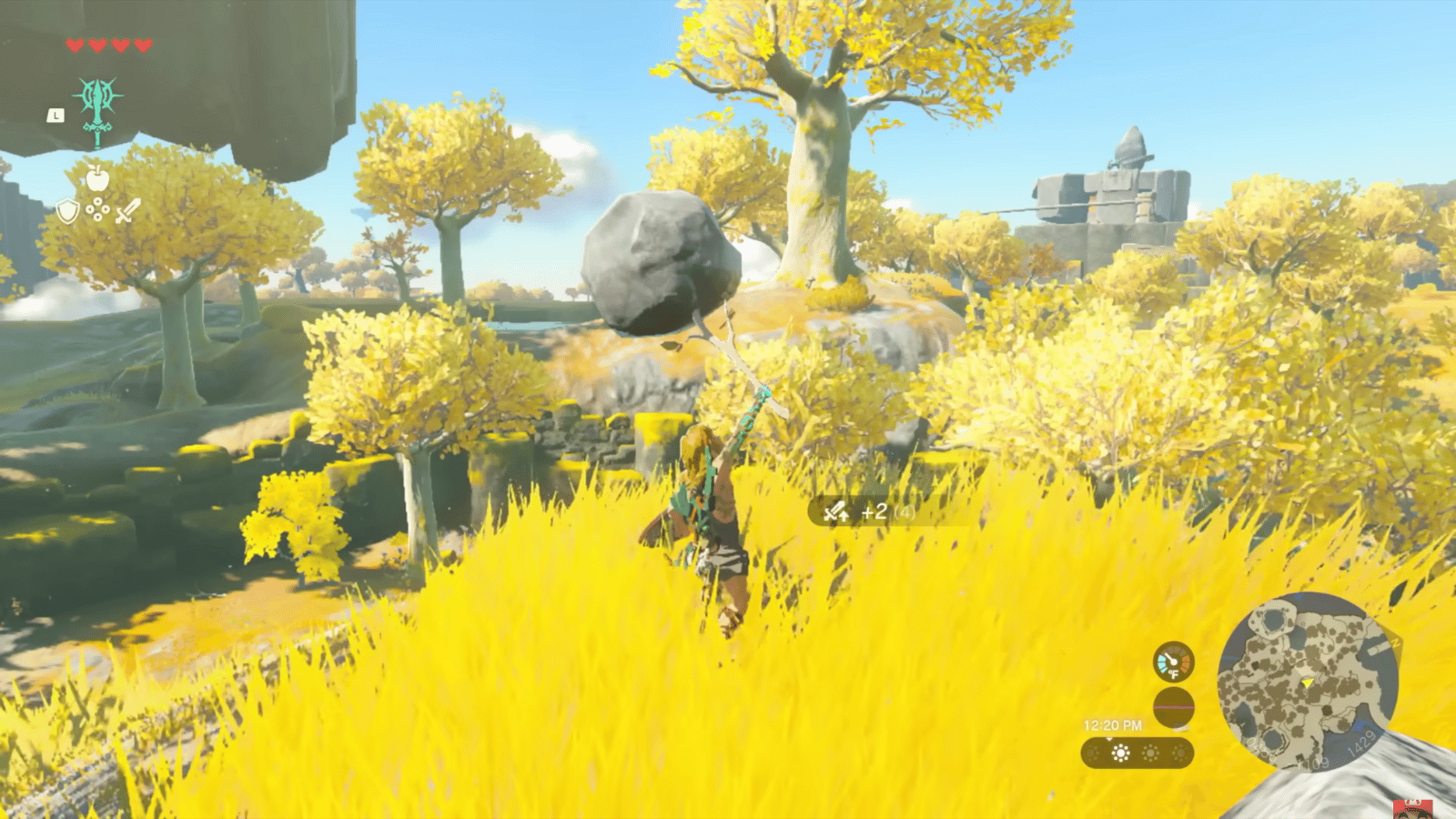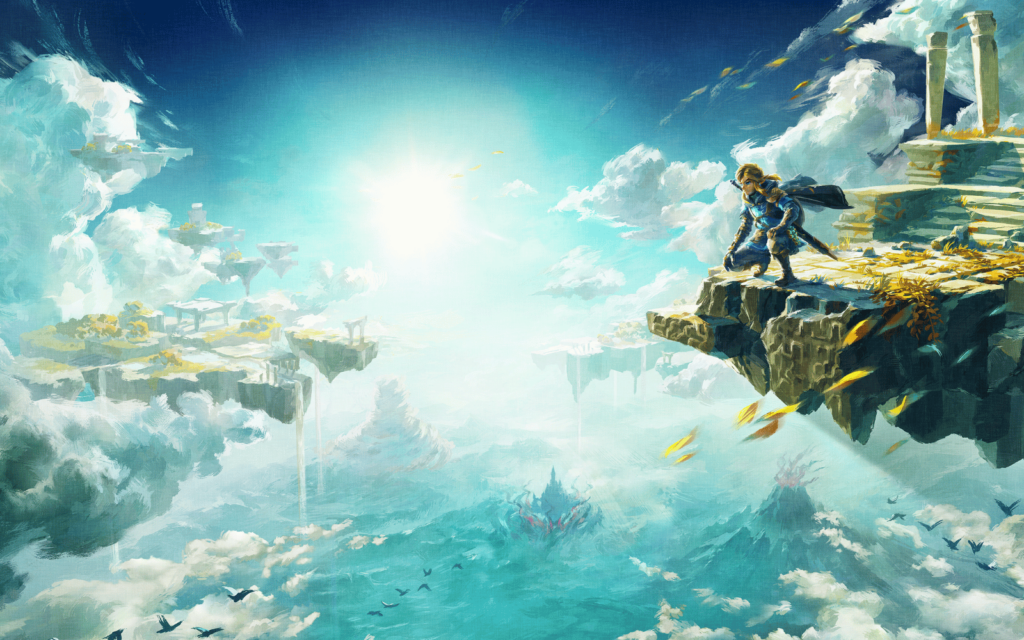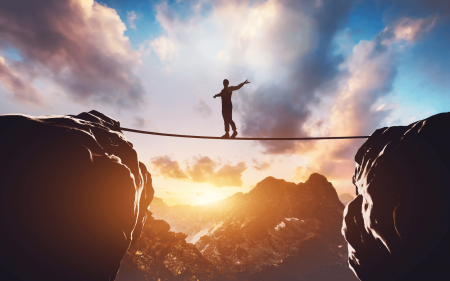It's not easy making one of the best games known to mankind. It's even harder to do it again. Fortunately (for us), that's exactly what Nintendo did with Tears of the Kingdom, which combines everything great from Breath of the Wild with an entire world of new. Puzzles are harder and far more enjoyable, and the return of Ganondorf makes this a hard game to miss.
-
Story
-
Gameplay
-
Replayability
-
Visuals
-
Performance
Note: This review contains minor spoilers
We find ourselves trying to remember a time before Breath of the Wild. Before gaming was changed forever. To be fair, that was six years ago. Short-form media hasn’t really helped us retain those memories. Fortunately, that doesn’t matter. Vague recollections or not, there’s something out that’ll wash those memories away entirely: The Legend of Zelda: Tears of the Kingdom.
We haven’t seriously forgotten about Breath of the Wild. We did, however, have to constantly remind ourselves that Nintendo’s latest definition of ‘magnum opus’ is a continuation in the ‘of the’ series of Zelda games. Sure, it features the same basic map of Hyrule, characters, and fundamental mechanics but the core of the game’s genius stems from Nintendo perfecting the formula, leaving only a hiccup or two in its wake.
Tears of the Kingdom is Zelda at its peak. There, we said it. Not that we needed to – we’re probably one of the few publications out there not giving this game a perfect ten. It does plenty to earn the score it did, introducing characters that feel alive and a physics engine so good that Einstein probably wrote E=MC² just to have the chance at playing this game. Perhaps its most impressive feat? Making this Hyrule outing feel… new.
This is your last warning: Beware of minor spoilers below
Shedding a tear for these gorgeous landscapes

Let’s start off with the sky islands. This, besides Ganondorf’s return, which was teased way before this game had a name, was the first major game-changer that made people start to pay more mind to ‘The Sequel to Breath of the Wild.’ And by Jove, are they – there’s no other word for it – awesome. As in, awe was quite literally inspired the first time we laid eyes on them.
Nothing and we mean NOTHING can compete with the feeling in one’s stomach at the sight of your first sky island. Fortunately, you won’t have to wait particularly long for that to happen. After learning of the impending doom that awaits both Zelda and Link, yadda, yadda – you know, typical Zelda stuff – we’re shunned in the direction of the Great Sky Island which vaguely resembles the Great Plateau in its sentiment. It teaches Link some powers (of which there is a varied number, depending on who you ask), teaches him to fight (again), and most importantly; teaches him to explore this new Hyrule before setting Link loose.
That last point is what makes Tears of the Kingdom so special. At least, in our eyes. You might disagree – and rightly so – saying “ackshually *pushes up glasses* the mechanics are the best part of this game”. That’s… fine. There are so many aspects of Tears that satisfy the basic need for an entirely new game. These, when combined, construct what could be our favourite game of all time. While the mechanics (Ultrahand specifically) do make a case for being Tears’ best feature, we just couldn’t stop ourselves from deviating from the story to explore Hyrule itself.
That’s because this is a different Hyrule. Sure, most of the landmarks are the same. But this is a world that’s been untouched by the Calamity for three years. Cities and towns have flourished, and there are more NPCs – some of which know Link personally now – creating a vibrant atmosphere that Breath of the Wild’s story and atmosphere just didn’t allow for. And if you’re wondering about all that Sheikah tech? It’s, uh, not around anymore – leaving plenty of room for new things to take its place. We have so much more to say about this Hyrule of new, but none that we’ll spoil so soon after the game’s release. Just… peek into those chasms dotted around the landscape when the chance arises.
Puzzling complexities

Despite the disappearing Sheikah tech, Breath of the Wild’s shrine system is back. Technically, not much has changed. They litter the lands of Hyrule, each containing a Light of Blessing that, combined with three others, can be used to upgrade Link’s health or stamina. You know, the basics. The Zonai nature of these shrines is immediately apparent. Nintendo hasn’t fiddled with the core mechanics too much. Inside, you’ll find a harder and larger selection of puzzles to tackle, rather than repeating the same Test of Strength over and over. Despite the clear improvement (and raised difficulty), these aren’t all Tears of the Kingdom has to offer in the way of puzzles.
Dungeons. Abate those fears because yes, they are back. Now bring those fears right back because they’re our least favourite part of Tears of the Kingdom. And believe us, we wish this was something we could change our minds on. We’re not entirely knocking this game’s Divine Beasts, uh, Temples (as they’re now named) which both improve upon Breath of the Wild’s biggest issue while simultaneously taking a step backward. That might sound confusing. And… it is. Allow us to explain.
These are dungeons that feel more like the dungeons of old – as in, the time before Breath of the Wild. They’re still region-locked, which brings players out of their comfort zones and into areas that aren’t so… Look, we headed first for Rito Village, to help rid the evil plaguing it. We got exactly what we wished for: a dungeon. There was just one problem. They’re boring. We enjoyed the journey to the dungeon more than the dungeon itself, which says more than we’d like about the dungeon system.
We get it. Nintendo is catering to an entirely new subset of fans that have only ever played Breath of the Wild and are still improving that formula to an extent. We didn’t hate or even dislike Tears’ dungeons – we were just hoping that we got something a little more extensive this time ‘round. Maybe next time, huh?
He’s right behind me, isn’t he?

Fortunately, dungeons aren’t what make or break this game. This is, without a doubt one of the best Legend of Zelda stories that Nintendo has ever crafted. Whether it tops the simplicity and pain that The Wind Waker offered, we’re not sure. But it deserves a seat at the table, away from Stuff’s bias towards the GameCube era of Zelda games.
Tears of the Kingdom’s excellent story is more or less due to the way Nintendo handled storytelling here, rather than the story itself. See, there are far more real cutscenes that apply to the current story (as opposed to the memories in Breath of the Wild), Zelda is actually a character (with feelings and everything!) and of course, the return of Ganondorf makes this a story that’s worth uncovering yourself. Just watch the game’s trailers, and you’ll be prepared to dive in.
What’s more, we thoroughly enjoyed this game’s implementation of memories, even if they do follow a similar design to that of its predecessor. The difference? These “memories” impact the current calamity that Ganondorf’s presence summons, and are generally better-written and well-paced. We’d recommend tackling them in chronological order, since it’s possible to see the final piece of the puzzle within the first hour of the game. Trust us, we know. We, uh, had to learn the hard way.
Link make hammer

We’ve already discussed the game’s core mechanics at length – Ultrahand, Fuse, Ascend, and Recall – in our first impressions. At the time, we’d only spent 48 hours with the game, focusing more on the flashier components, building the wildest machines and weapons that walk a fine line between being little Korok-carriers and breaking the Geneva Convention. We’ve since changed our tune, spending a lot more time with Ascend and Recall, making them some of our favourite mechanics ever put to code.
If you’re wondering what the hell we’re talking about, these are Link’s newest abilities, replacing Cryonis, Magnesis, Remote Bombs, and Stasis in Breath of the Wild. Functionally these work the same as they did then, though Nintendo’s decision to assign the ability wheel to the ZL button rather than up on the D-Pad took us longer to get used to than we’d have liked. It makes for some intense and rather confusing fights, let us tell you.
Gone are the days of infinite remote bombs that could take out Ganon if you had enough heart (and skill) to do so. Link’s new powers are almost all exploratory in nature, with Ultrahand being the force holding together our flying machines and 4x4s – making use of almost everything in Hyrule that isn’t nailed down. Fuse takes a similar approach, combining anything and everything to each other, building a weapon with improved durability and special powers. This almost entirely “fixes” (not that we saw anything wrong with it) Breath of the Wild’s durability system, giving players an option to turn a tree branch into something that could take down Ganondorf. Why you’d do such a thing, we’re not so sure. Maybe just to see the fear in Ganondorf’s eyes as we charge him down with a fish-stuck tree branch.
In the hands of more able players (so, not us), Recall is one of the game’s most overpowered abilities. It works as an upgrade to Stasis, though instead of freezing an object in time, it can send it back through time while the world around it continues to move at full speed. This makes for some interesting puzzles and can even make traversing the map that much easier. Recall’s power could potentially be limitless in the hands of the most dedicated speed-runners (so again, not us).
Ascend, the dullest of all Link’s abilities, is an underrated gem that we forgot we had for the first few days of play. It allows players to “clip” through ceilings that are low enough, essentially skipping the arduous task of climbing up certain mountains and wells. Soon, however, the power becomes an important one that we’d be absolutely lost without. But you don’t need to listen to this explanation. With Tears of the Kingdom, it’s all about actually experiencing it. So.. go out and do that.
Tears of the Kingdom verdict

We can feel Tears of the Kingdom creeping its way up our list of favourite games of all time, being currently locked in a furious battle with Elden Ring, though we can’t see the Soulsborne title coming out on top. Sure, Tears of the Kingdom has some issues. The Switch’s six-year-old hardware stops it from reaching its full potential. The thing is; we don’t care. The combination of a wonderfully tense and action-packed story, the best mechanics we’ve ever seen, and a world teeming with things to do make this a must-play for any gamer. Any. Gamer.





